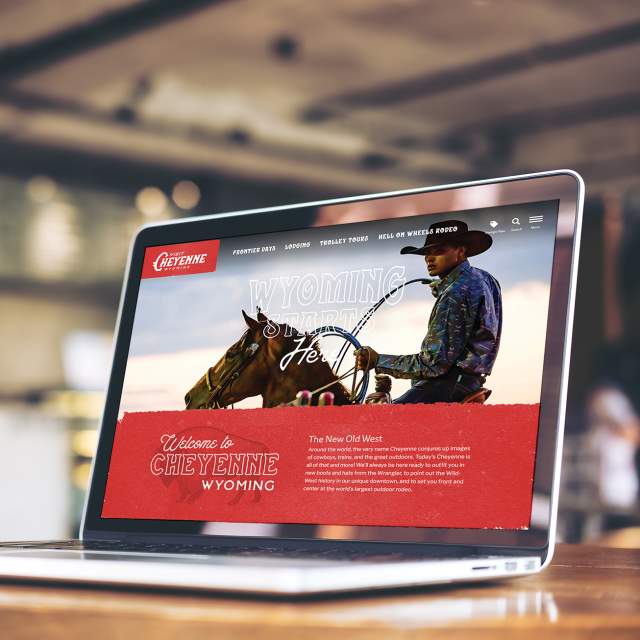Why Responsive Website Design is Essential for Today's Digital Market
Why Responsive Website Design is Essential for Today's Digital Market
Blog Article
Increase Interaction With Cutting-edge Site Style Solutions
In the realm of electronic interaction, the relevance of ingenious web site design options can not be overemphasized. An attentively crafted user experience, underpinned by critical visual design and interactive aspects, can considerably boost individual engagement. By discovering different approaches such as responsive style and customized web content, businesses can create a system that not just captivates individuals but likewise cultivates lasting loyalty. However, the difficulty lies in comprehending the nuances of user actions and preferences. This raises an important inquiry: what particular approaches can be implemented to ensure that a website continues to be user-centric and engaging?

Recognizing Individual Experience
Recognizing customer experience (UX) is vital for creating efficient site layout options, as it straight influences how customers interact with digital systems. A comprehensive UX technique incorporates different aspects, consisting of ease of access, individual, and usability contentment, all of which contribute to the overall effectiveness of a site.
To begin with, usability focuses on exactly how easily individuals can navigate and locate the details they look for. Ease of access ensures that all users, including those with impairments, can properly communicate with the internet site.
In addition, understanding individual personas is crucial for customizing the experience to fulfill specific audience demands. By carrying out user study and testing, developers can gather insights that inform design choices, guaranteeing the website not only meets aesthetic goals but likewise fulfills useful requirements. Eventually, a thoughtful method to UX layout promotes interaction, urges retention, and boosts total individual contentment, which are essential for the success of any kind of digital system.
Visual Layout Approaches
Integrating effective visual design methods is crucial for recording individual focus and improving the general individual experience on a site. A well-thought-out aesthetic power structure overviews customers with the material, allowing them to conveniently browse and soak up info. This can be achieved with the strategic usage of typography, color pattern, and spacing, which collectively produce a appealing and natural layout.
Color plays a pivotal duty in developing and evoking emotions brand name identification. Using a balanced color palette that aligns with the brand's principles can promote familiarity and count on. In addition, including high-grade pictures and graphics boosts aesthetic allure and can dramatically enhance user engagement.
Whitespace, typically forgot, is equally essential as it permits content to breathe and protects against overwhelming customers with mess. It promotes simpler reading and understanding, resulting in an extra satisfying browsing experience.
Finally, consistency in design components-- such as button icons, designs, and fonts-- makes sure a seamless user trip, enhancing the brand name's professionalism and reliability. By strategically implementing these visual design methods, sites can not just bring in visitors yet also motivate them to remain longer and engage more deeply with the web content.
Interactive Elements for Involvement
Engaging individuals effectively frequently depends upon the implementation of interactive elements that welcome engagement and cultivate a dynamic surfing experience. These aspects, consisting of quizzes, surveys, and interactive infographics, urge customers to proactively participate instead of passively consume web content. By integrating such functions, websites can not only capture interest yet likewise enhance individual retention.

Gamification is another powerful method. Integrating game-like aspects, such as accomplishments or benefits for completing jobs, can change mundane interactions into satisfying experiences. This approach not just increases engagement yet likewise urges customers to return, creating a loyal target market.
Furthermore, interactive elements can promote social sharing, intensifying an internet site's reach. Functions like comment sections, share switches, and user-generated material areas foster community communication, turning site visitors into energetic individuals. website design. Ultimately, the critical use interactive elements is important for developing a engaging and engaging site that reverberates with customers
Responsive and Flexible Style
A well-designed internet site should prioritize responsive and adaptive design to make sure optimum customer experiences throughout a range of devices and display dimensions. Receptive layout uses liquid grids and flexible pictures, permitting the format to immediately change based on the customer's screen dimension. This method ensures that individuals can quickly interact and browse with the content, no matter whether they are making use of a smart device, desktop, or tablet .
On the other hand, flexible design uses predefined designs that are customized to certain tool categories. This means that the site discovers the sort of tool being utilized and offers the appropriate design, which can improve loading times and maximize the screen of vital components. While both strategies aim to enhance functionality, receptive design is often preferred for its fluidness and seamless change in between read more devices.
Incorporating flexible and receptive style not only improves customer fulfillment yet likewise favorably affects online search engine positions. Browse engines focus on mobile-friendly websites, thus raising visibility and drawing in more visitors. As a result, buying these design techniques is crucial for companies looking to engage their target market properly and maintain a competitive edge in today's electronic landscape.
Analyzing Customer Feedback and Data
Customer feedback and data analysis are necessary elements of efficient website layout, as they provide useful insights into individual actions and preferences. By systematically checking out and collecting customer feedback through surveys, use testing, and analytics tools, developers can determine discomfort points and locations for improvement. This data-driven strategy allows services to adjust their web site aspects, making sure that the individual experience straightens with target market expectations.
Assessing metrics such as bounce rates, time on page, and click-through prices provides a measurable point of view on individual involvement. These metrics help designers determine which material reverberates and which locations might call for optimization. Additionally, A/B testing can be employed to examine variants in design, permitting designers to make informed choices based upon user interactions.
Integrating user comments not only enhances web site usability but also promotes a feeling of area and trust fund. Engaging with users via comments loops cultivates loyalty and encourages repeat visits. Inevitably, leveraging individual comments and information evaluation is indispensable to producing a dynamic, user-centered internet site that adjusts to progressing customer needs and preferences, thus driving higher engagement and fulfillment.
Conclusion

An attentively crafted individual experience, underpinned by strategic aesthetic layout and interactive components, can substantially boost user interaction.Including reliable aesthetic design approaches is necessary for recording individual attention and improving the general user experience on an internet site.User responses and data analysis are crucial components of reliable internet site design, as they offer useful understandings into user habits and choices. Inevitably, leveraging user responses and information Clicking Here analysis is indispensable to developing a vibrant, user-centered site that adjusts to advancing customer requirements and preferences, consequently driving higher interaction and satisfaction.
In verdict, innovative internet site layout options substantially boost user engagement by prioritizing customer experience, employing reliable aesthetic approaches, and integrating interactive aspects.
Report this page